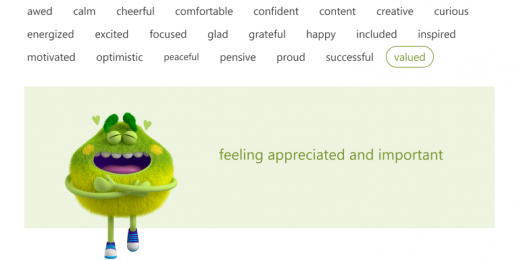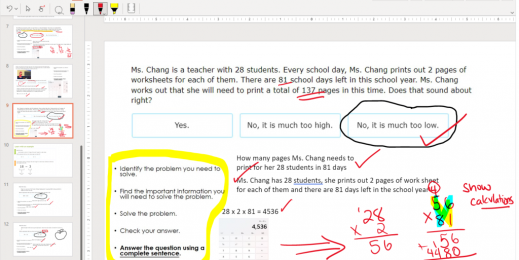
K-12 Teachers Say Classroom Models Need to Evolve to Prepare Canadian Students for the Future
Only half of teachers surveyed in Canada say students are taught in ways that are relevant to the skills they need for the future, according to new survey from Microsoft
As a new school year begins for millions of Canadian students, teachers across the country say it’s time to embrace new teaching models to better align with the realities, opportunities and challenges of today’s classroom and tomorrow’s workplace. In a new survey from Microsoft of over 500 Canadian teachers and school leaders, most said schools need to do more to adapt to the evolving needs of students. Teachers are calling for changes that make classrooms more engaging, inclusive and relevant for a new digital era.

New models for a new era of digital innovation
From AI to interconnected smart devices, teachers recognize that the rapid pace of technological innovation is changing the workforce students will be joining, but few classrooms are teaching the skills students need to succeed in the new digital world. In fact, ninety percent of teachers surveyed agree it’s important to teach students the digital skills they’ll need for modern life, but only half of teachers (52 percent) say students are taught in ways that are relevant to the skills they need for the future. Strikingly, the survey revealed an overwhelming majority of teachers (79 percent) felt data literacy and digital citizenship were essential skills for today’s students, but these topics were only taught in 22 and 53 percent of classrooms respectively. While teachers have just begun to consider the implications of AI in education, 41 percent of teachers believe that students should learn about generative AI to better equip them for life outside school and in their careers. That number rose to 50 percent among teachers of grades 7-12.
It’s crucial that we listen to teachers so we can better empower students in their learning and be prepared to contribute to Canada’s economic future. We have a responsibility to address these gaps, reignite a love of learning, and help students thrive in a digital world. – Elka Walsh, Associate Vice President, Learning & Teaching, Microsoft Canada.
Digital tools more prevalent since the pandemic, but not used effectively
For many teachers, the pandemic spurred the adoption of digitally enhanced learning in the classroom. Eighty-two percent of teachers surveyed said their school’s use of digital tools started or increased with the pandemic. But only 35 percent of respondents said most teachers are equipped with the best digital tools to help them teach and a similar number (34 percent) said teachers receive the training needed to use these tools effectively. Six out of ten respondents said teaching methods should change to make the most of these tools. Among the most promising use cases for teachers, according to the survey, was time management. Eighty percent of teachers agree they need more tools to help them manage their time more productively – an unsurprising stat given that 86 percent of teachers rate their workload as high or very high.
The results also indicated a clear difference in approach to technology in the classroom between those schools with an established sustainable digital strategy and those without. When asked if students were more engaged when digital tools are used in the classroom, three quarters of respondents with a digital strategy agreed. Among teachers in schools without a digital strategy, fewer than half agreed technology helped to increase engagement.
Engagement and inclusion need a boost
It is apparent that teachers are struggling to keep students engaged, particularly when faced with the emotional and wellbeing challenges related to the pandemic. Only half of teachers surveyed (51 percent) said students are taught in ways that engage them and keep their interest and only a third (35 percent) agree schools are succeeding in helping to address students mental and emotional wellbeing.
Today’s teachers know inclusion and accessibility is crucial to help every student reach their potential. Ninety-five percent said inclusive and accessible teaching resources are somewhat or very important. But only 48 percent say current teaching methods are inclusive and only 46 percent feel students are taught in ways that are responsive to their individual needs. Teachers also want schools to do more to address the mental and emotional wellbeing of students (74 percent) and feel students are still emotionally challenged by the disruption of the pandemic (72 percent).
Canada’s teachers are telling us we need revitalized learning models so their students don’t get left behind. New models are critical to improve outcomes for all students and prepare them for the digital future. – Marc Seaman, Vice President, Education Segment, Microsoft Canada.
Building on decades of work with policy makers, school leaders and educators around the world, Microsoft is committed to teacher and student success. Microsoft is innovating to deliver tools and resources to educators that are responsive to student and teacher needs, supporting inclusive and accessible learning environments. Through programs like Showcase Schools, Microsoft collaborates with schools in Canada and worldwide to demonstrate what’s possible to transform learning and deliver sustained results for students. Microsoft also offers free curated learning to help instructors adopt new digital tools and design inclusive learning. Visit Microsoft.com/education for more information.
About the FUSE Insights Survey
These results are taken from a survey of 503 teachers from across Canada. The survey was delivered online, in English and French, between 1st and 8th June 2023; and covered a cross section of teachers by geography – 39 percent are in Ontario and 29 percent in Quebec, 12 percent are in BC, 15 percent in the Prairies and 8 percent in the Atlantic provinces – and grade. Of the 503 teachers who completed the survey, 493 (95 percent) teach students themselves, and the respondents also included 20 school administrators, principals and vice-principals. 88 percent of respondents to the survey work at public schools and the remainder in private schools; a little over a third (37 percent) of teachers who completed the survey teach Kindergarten to grade 3, a quarter (26 percent) grades 4 to 6 and 53 percent teach grades 7 to 12.
On average respondents to the survey have been working in education for 13 years, and 48 percent have done so for more than 15 years. In addition, just over half (53 percent) of teachers included in the survey are aged under 45 (47 percent are aged 45+); three quarters (73 percent) are women and 27 percent men.








